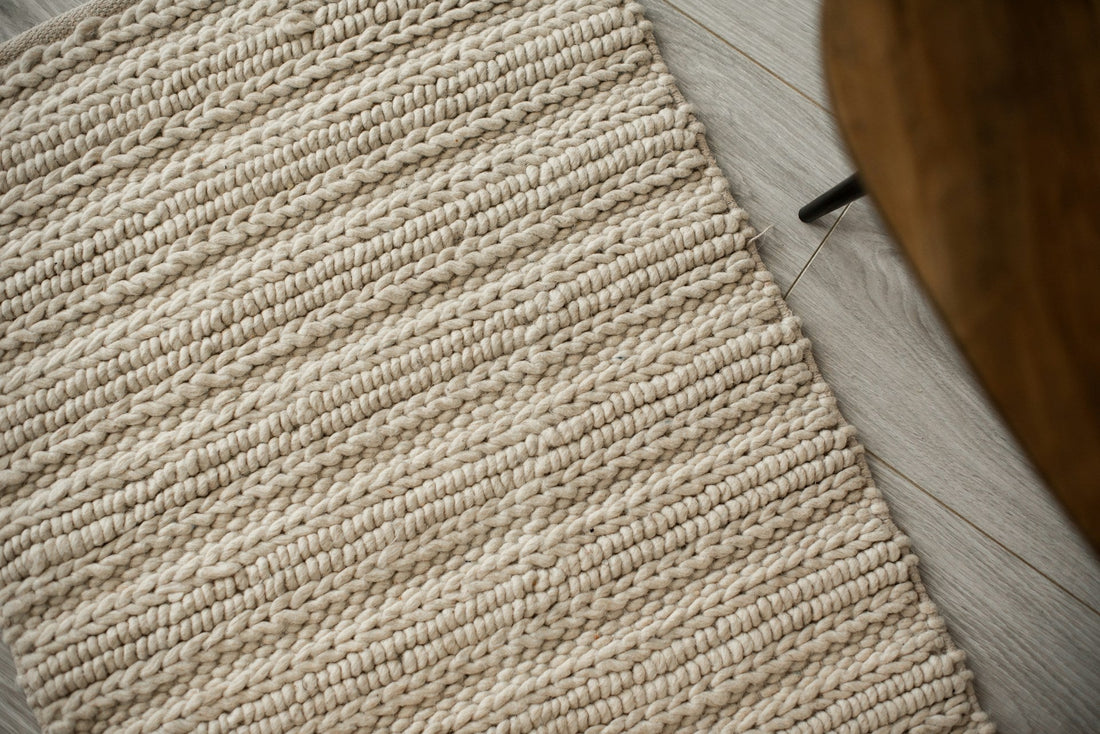Choosing the right rug can pull an entire room together, but matching it to your existing color scheme takes a little planning. Whether your space is bright and bold or calm and neutral, the right rug can either complement what you have or bring in just enough contrast to spark interest without overwhelming the space. That’s what makes custom handmade rugs so special. They offer more flexibility with design and color, giving you extra freedom to harmonize the look of your room.
Custom handmade rugs aren't just unique, they’re personal. You’re not limited to what’s on a showroom floor. Each piece becomes a reflection of your taste and your home’s character. But even with that unique touch, you want to be sure the rug speaks the same visual language as the rest of the space. That starts with understanding how color works in your room and how different tones play off one another.
Understanding Your Room's Color Palette
Before looking at rug options, it helps to get clear on what colors are already working in your room. Every space has a built-in color palette made up of a few core elements. These usually include your furniture pieces, wall color, flooring, and accessories like artwork or pillows.
Here’s a simple way to think about your room’s color layout:
- Primary color: This is the dominant color in the space, often your wall color or biggest furniture piece
- Secondary color: A support shade that may show up in things like area chairs, window treatments, or throw blankets
- Accent color: A pop of contrast that adds character—something like a mustard pillow in a navy room or a teal vase in a brown-toned space
When you break it down like this, it becomes much easier to figure out what colors are working and where a rug can complement or elevate those choices. Look around your living room or bedroom and jot down two or three colors that stand out most. This is your base to work with.
If you have a space where everything already feels soft and muted, like beiges and grays, then adding a rug in similar tones will keep that calm look. On the other hand, a rug that brings a small splash of coral or rust could liven things up without being loud. Let’s say you’re decorating a space in Frisco with large windows, a light tan couch, and wooden floors. Something fresh with a bit of green or terracotta could balance the warmth from the floor and the light coming in. You don't need a full rainbow to make a statement. Sometimes just sticking to a tight palette can make the room feel cohesive and relaxed.
Choosing The Right Custom Handmade Rug
Once you’ve nailed down your color palette, it becomes much easier to find a rug that fits. But that doesn’t always mean picking one shade and matching it. In many cases, a rug can bring structure to a room or even introduce a bold color in a subtle way.
Here are a few common approaches that work well:
1. Tone-on-tone harmony: Use shades from the same color family. A gray-blue rug in a room with navy and ash tones builds a peaceful flow
2. Bold contrast: Go for a rug in a color that directly contrasts with your walls or furniture. A rich burgundy rug looks striking next to pale beige
3. Pattern play: Pick a rug with a simple pattern that includes two or three colors from your space. That keeps things interesting without creating clutter
4. Natural grounding: Use earthy tones like soft browns or muted greens to stretch across multiple colors in your room while echoing wood or nature tones
Matching doesn’t always mean identical. Custom handmade rugs give you the chance to blend both color and personality. Whether you're after a soft balance or want something that stands out, make sure it ties back to something you already have in the room. That anchor helps keep the room from feeling disjointed.
Balancing Patterns And Textures
Patterns and textures play a big role in how a rug interacts with your room colors. A room full of solids can benefit from a patterned rug to give it more depth. On the other side, if your room already has a mix of patterns in the curtains, cushions, or upholstery, you may want a more subtle rug design to bring balance.
Here’s how to find the right mix without going overboard:
- If the room feels flat or plain, consider adding a rug with a bold pattern to create movement
- For spaces with already strong prints like floral drapes or geometric throw pillows, go with a rug in a solid tone or one with a very low-contrast design
- Use texture to add dimension without relying on color or pattern. Think of a thick wool rug in a single shade that adds visual interest just by how it feels and looks under light
- Layering textures can give even the most neutral color palettes more life. A slightly rough, natural-fiber rug can sit underneath a cozier patterned piece to add warmth
Don’t be afraid to mix things up a little. Let’s say your living room in Frisco has leather seating, metal lighting, and a glass coffee table. That room may benefit from a plush custom handmade rug with a mild texture. It softens the look and adds comfort without changing your existing color scheme. Texture fills in the gaps that color misses. It brings a tactile quality that's just as important.
Practical Tips For Placement And Size
Even a stylish rug can feel off if it’s the wrong size or in the wrong spot. Size and placement are just as important as color and pattern when bringing a space together. A rug that’s too small can make a room feel disconnected. Too large, and it can crowd everything.
Here are a few reliable tips to follow:
1. For living rooms, choose a rug that fits under the front legs of all your main seating. This helps define the area without cutting it off
2. In bedrooms, place the rug under the lower two-thirds of the bed so it extends on both sides and at the foot
3. For dining areas, the rug should be large enough so that chairs stay on it even when they’re pulled out
4. In open floor plans, use rugs to carve out visual zones like a reading nook or conversation area
5. Make sure the rug doesn’t touch the walls. A small border of floor between the rug and the wall keeps the room from feeling cramped
The way you place a rug changes how your room feels. A centered rug makes everything look grounded. One angled slightly under furniture can give a casual, relaxed look. Going big? Just make sure the edges stay away from walls and don’t cover vents or outlets. Those details matter. Thinking of where and how the rug lands can make your selections shine more than the pattern itself.
Make Your Space Stand Out with RugTown
A custom handmade rug has the ability to do more than just cover the floor. It helps tie your entire room together. Whether you're adding warmth to a modern space or introducing color into a more neutral setting, the right rug acts like a connector. When it follows the lead of your color palette and balances well with existing furniture, it doesn’t just look good. It feels right.
By paying attention to color relationships, patterns, textures, size, and placement, it’s easier to find a rug that completes your space rather than complicates it. Thoughtful rug choices don’t need to be overwhelming. With a few grounded design cues and a clear understanding of what your space already has going on, it becomes a fun way to personalize your home in style.
RugTown offers an exceptional selection of custom handmade rugs, uniquely crafted to harmonize with your color scheme and elevate your space's ambiance. Discover the perfect addition for your home by exploring our diverse range of styles, colors, and sizes. Trust RugTown to bring both style and comfort right to your doorstep.

